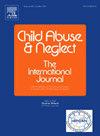有家庭外护理经验的男性和女性的犯罪轨迹的前瞻性检查,直到退休年龄。
IF 3.4
2区 心理学
Q1 FAMILY STUDIES
引用次数: 0
摘要
背景:人们普遍认为,家庭外护理(OHC)与犯罪行为有关,但对于这种行为在家庭外护理人群中是如何在整个生命过程中发展的,以及它是否以停止或持续为标志,人们知之甚少。目的:本研究考察了有或没有OHC经历的男性和女性从15岁到64岁的犯罪轨迹。它还研究了不同的安置年龄、安置类型和安置原因如何影响这些轨迹中的代表性。参与者和环境:瑞典前瞻性纵向数据来自斯德哥尔摩出生队列多代研究(SBC Multigen, n≈14,000)。方法:采用基于性别分层群体的轨迹模型识别冒犯轨迹,并采用多项逻辑回归分析OHC经历与冒犯轨迹的关系。由儿童福利当局调查但未接受照顾的儿童组成的比较组也包括在内。结果:在青少年时期,由于个人行为或个人和家庭环境的结合而被置于多种类型的护理中的个体,与没有这种经历的个体相比,面临着持续的、高发生率的犯罪模式的风险要高得多。那些被调查但没有被安置的人也显示出慢性犯罪模式的风险增加,尽管通常低于有OHC经历的人。结论:本研究为OHC人群中的犯罪动态提供了有价值的见解,并强调了干预的必要性,这些干预可以防止犯罪行为的开始,以及破坏或改变这一弱势群体中持续的犯罪轨迹。本文章由计算机程序翻译,如有差异,请以英文原文为准。
A prospective examination of offending trajectories in men and women with out-of-home care experience followed up until retirement age
Background
It is widely recognized that out-of-home care (OHC) is associated with criminal behavior, yet less is known about how this behavior unfolds in the OHC population over the life course and whether it is marked by desistance or persistence.
Objective
This study examines offending trajectories from age 15 to 64 in men and women with and without OHC experiences. It also investigates how different ages of placement, types of placements and reasons for placements affect representation across these trajectories.
Participants and setting
Swedish prospective longitudinal data come from the Stockholm Birth Cohort Multigenerational study (SBC Multigen, n ≈ 14,000).
Methods
Sex-stratified group-based trajectory modeling was employed to identify offending trajectories and multinomial logistic regression to analyze the associations between OHC experiences and these trajectories. A comparison group of children investigated by the child welfare authorities but not placed in care was included.
Results
Individuals placed during adolescence in multiple types of care due to individual behavior or a combination of individual and family circumstances, faced a significantly higher risk of persistent, high-rate offending patterns compared to those without such experiences. Those investigated but not placed also showed an increased risk of chronic offending patterns, though typically lower than that of individuals with OHC experiences.
Conclusions
This study provides valuable insights into the dynamics of offending within OHC populations and emphasizes the need for interventions that can prevent the initiation of criminal behavior, as well as disrupt or alter ongoing offending trajectories within this disadvantaged group.
求助全文
通过发布文献求助,成功后即可免费获取论文全文。
去求助
来源期刊

Child Abuse & Neglect
Multiple-
CiteScore
7.40
自引率
10.40%
发文量
397
期刊介绍:
Official Publication of the International Society for Prevention of Child Abuse and Neglect. Child Abuse & Neglect The International Journal, provides an international, multidisciplinary forum on all aspects of child abuse and neglect, with special emphasis on prevention and treatment; the scope extends further to all those aspects of life which either favor or hinder child development. While contributions will primarily be from the fields of psychology, psychiatry, social work, medicine, nursing, law enforcement, legislature, education, and anthropology, the Journal encourages the concerned lay individual and child-oriented advocate organizations to contribute.
 求助内容:
求助内容: 应助结果提醒方式:
应助结果提醒方式:


